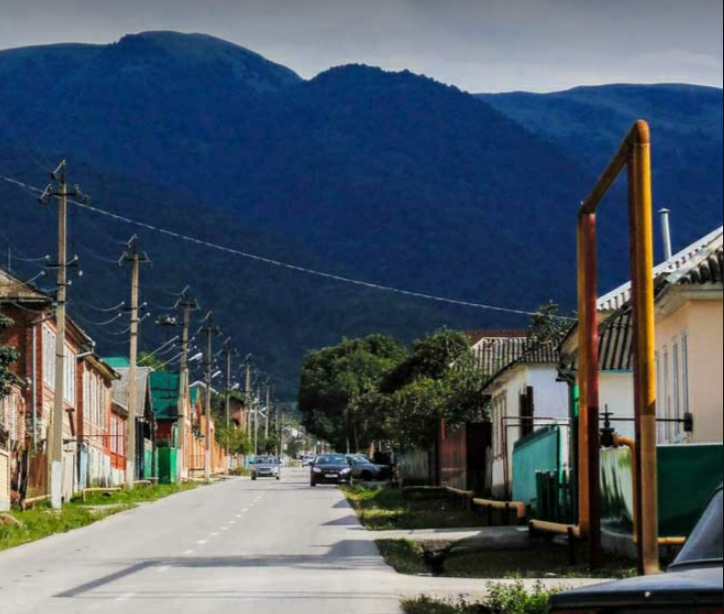On the 27 April 2001, soldiers from the Russian Army broke into the home of a resident of the Chechen village of Tevzana. There were about fifteen soldiers, led by an officer. The demanded alcohol from the owner of the house, and when they were told no, they beat up his oldest son. After having carried out a search in all the rooms, they left the house.
After an hour, shots were heard from a village cemetery nearby. Soon after, a family could not locate 19 year-old Zaur Dagayev and 22 year-old Uvais Nagayev. Just before the shots were heard, they had been talking by the gate outside the house. But where they went from there, and whether they went on their own, nobody saw.
This became clear on the same night, when Uvais Nagayev came home. He was covered in blood and said that Russian soldiers had approached him and Zaur Dagayev by the gates of the house. After checking their documents, they had tied their hands up and beaten them. Then, lifting them up from the ground and hitting them with the PRIKLAD of their guns, they had led them to the edges of the village. By the village cemetery they had ordered them to stop. After a short discussion, the soldiers led the young men to a row of graves and opened fire. Zaur Dagayev died on the spot. Heavily wounded, Uvais Nagayev fell and pretended to be dead. When the killers left, he crawled, sometimes losing consciousness, until he made it home. Fate was merciful that night, but that would not last.
On the 3 May, Russian security forces arrived on armored personnel carriers and kidnapped Uvais Nagayev. For a long time, nobody knew where he was or what had happened to him. Appealing to the authorities was useless, they had been told to ignore the family members or they gave them formal replies, void of any real information. As a result, they got in touch with a local resident, Shamil Ortsuev, who was in contact with the officers stationed in the area and who often made use of those contacts to help people. The intermediary said that among the kidnappers were soldiers who went by the nicknames “Ushakov” and “Strelkov”. They had brought Uvais Nagayev to the military unit located in the neighboring village of Khattuni, where they had tortured and beaten him for a long time. They then blew him up while he was still alive (more information in Russian: http://old.memo.ru/hr/hotpoints/chechen/jzl20/100.html).
At first, nobody believed the intermediary. The family members kept believing that Uvais Nagayev was alive, and that they should continue looking for him. They managed to identify one of the kidnappers. Behind the nickname “Strelkov” was a man by the name of Igor Girkin. He was a writer and a somewhat public figure who held extreme nationalistic views, he had participated in the war in Transnistria, then went to Bosnia as a volunteer, fighting on the side of the Serbs. He took part in the first Russian-Chechen war, and during the second war he served as an FSB Major (or Lieutenant Colonel) in the 45th airborne regiment in Khattuni.
The relatives addressed the military unit. However, the response became the murder of Shamil Ortsuev. On 14 June 2011, he was returning from Khattuni with four other people, one of whom was a resident of Vedenskiy district who had been released for money. At a checkpoint by the edge of the village, the Russian military ambushed them and opened fire. All five were killed on the spot (for more information in Russian: http://old.memo.ru/hr/hotpoints/chechen/jzl20/100.html).
After the murder of the intermediary, searches for Uvais Nagayev were stopped. It became clear that he had been executed and that it would be risky to keep searching. However, not all members of the family were able to come to terms with the facts. Two sisters of Uvais Nagaev – Aminat and Roza – became involved with the most radical elements of the Chechen resistance movement. The first sister blew up a Tu-134 airplane flying from Moscow to Volgograd on 24 August 2004. The second sister were among the participants of the school siege in Beslan on 1 September the same year.
Igor Girkin retired in 2013. But not in order to lead a quiet life. On the night between 11 and 12 April 2014, he crossed the border of Ukraine as the head of a group of 52 men and took over administrative buildings in Slavyansk in Donetsk Province. This was the first armed attack in what has now turned into a full-scale Russian-Ukrainian war.
During his time in Slavyansk, Igor Girkin approved the murders of Ukrainian activists, something he has openly admitted. On his orders, the kidnapping, torture and execution of Yuri Rybak was carried out. Rybak was a member of Gorlovka city council and “guilty” of attempting to hoist the Ukrainian flag over the Mayors’ office. Under fire by the Ukrainian army and volunteer military groups, Girkin fled from Slavyansk. He fled while using refugees, including women, children and elderly, as human shields (for more information in Russian: https://svpressa.ru/persons/igor-strelkov/).
For these crimes, Igor Girkin has been included on a list of people who are banned from entering the European Union. At the end of 2014, the U.S. also included him on their sanctions list.
In Chechnya, Russian soldiers acted with impunity. Torture and extrajudicial executions grew commonplace, and many family members of victims never found justice – sometimes leading to further bloodshed in the search for revenge.
The international community has the opportunity now to ensure that the mistakes of Chechnya are not repeated in Ukraine.
